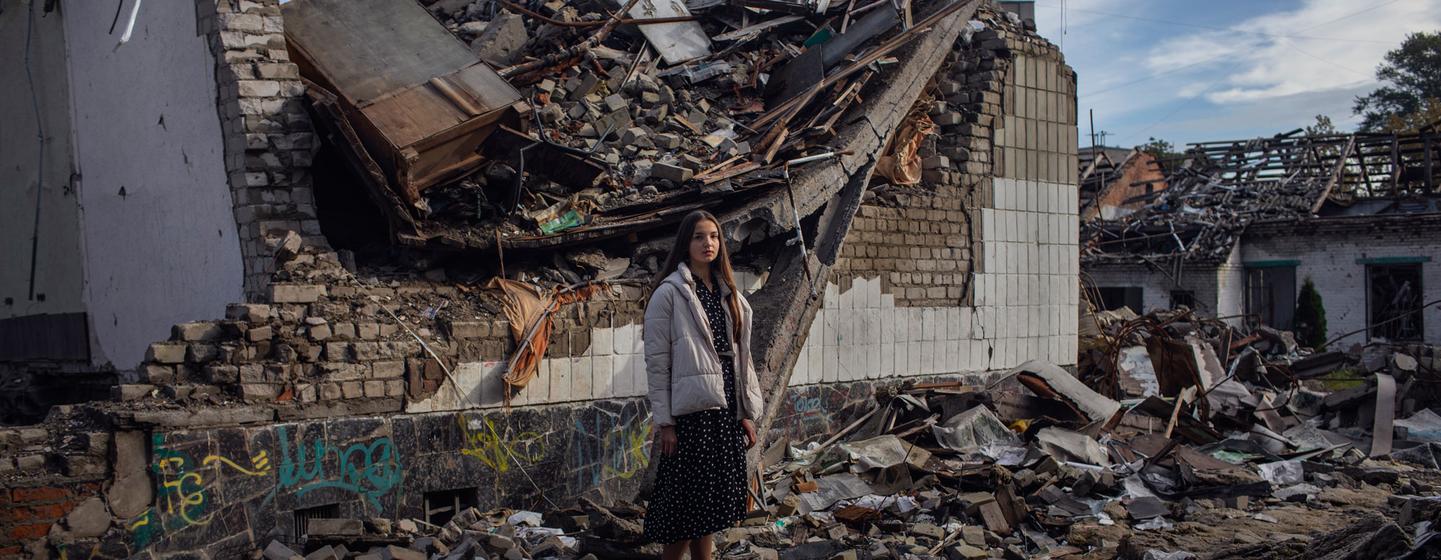Summary:
-
As the war moves into its second year, the UN and its allies are asking for about $4 billion to help more than 11 million people.
-
According to UN relief workers in Geneva on Friday, there have been up to 500 child fatalities and nearly 1,000 injuries.
-
According to UNICEF, about five million children in Ukraine do not have any access to education, and 7.8 million children overall have been affected. The threat of a toxic legacy last year, the UN Environment Programme (UNEP) and its partners did some preliminary monitoring of the conflict.
-
The International Atomic Energy Agency (IAEA) released a report on Thursday about what it was doing to reduce the chance of a nuclear disaster while the conflict was still going on.
-
Since the beginning of the conflict, Russian forces have controlled Zaporizhzhya, the largest nuclear power plant in Europe.
According to UN Spokesman Stéphane Dujarric, “From the start of the full-scale war, we, along with our humanitarian partners in Ukraine, have made every effort to ramp up operations to offer life-saving support to those who need it most.”
According to him, thousands of convoys transported essential supplies to citizens in every region of the country last year. Aid organizations helped close to 16 million people by providing them with water, medicine, heating equipment, other supplies, and financial assistance for home repairs.
He added that the most extensive cash aid program in history reached six million individuals and cost $1.2 billion.
As the war moves into its second year, the UN and its allies are asking for about $4 billion to help more than 11 million people. Just over 14% of the campaign has been funded, according to Mr. Dujarric.
Loss young lives
The death, destruction, devastation, and displacement that have occurred in Ukraine over the previous 12 months have been evaluated by UN organisations.
According to UN relief workers in Geneva on Friday, there have been up to 500 child fatalities and nearly 1,000 injuries.
The UN Children’s Fund (UNICEF) said that over 800 medical institutions had been harmed or destroyed by shelling in addition to the horrific death toll.

A teenager from Ukraine stands among the ruins of her Zhytomyr school, which was completely demolished.
Criticism of education
The war has also hampered access to education, and thousands of elementary and secondary schools have suffered damage.
According to UNICEF, about five million children in Ukraine do not have any access to education, and 7.8 million children overall have been affected.
The threat of toxic legacy
Last year, the UN Environment Programme (UNEP) and its partners did some preliminary monitoring of the conflict. They found that the war would leave toxic waste for future generations.
UNEP stated that “thousands of possible cases of air, water, and land pollution and the deterioration of ecosystems, including dangers to neighbouring nations, have already been detected,” adding that it will verify the scope and severity in their entirety.
Due to the size and spread of the reported events, the UNEP is helping the Ukrainian government monitor environmental effects from afar and is getting ready to do impact assessments on the ground.
The UNEP executive director, Inger Andersen, said, “The mapping and early screening of environmental dangers only serve to show that war is very toxic.”
Then, she continued, “Ukraine will need significant international assistance to analyse, mitigate, and remediate the damage throughout the nation and reduce hazards to the larger area.
Polluted seas and air
The conflict has caused damage in many different parts of the country, including nuclear power plants, energy infrastructure like oil storage tanks, oil refineries, and drilling platforms, distribution pipelines, mines, industrial sites, and agro-processing facilities.
UNEP says that because of this, there have been several cases of air pollution and there may have been major contamination of ground and surface water.
Pumping stations, sewage facilities, and water purification plants have suffered significant damage.
Challenges with cleanup
Unsafe compounds have also been spilt as a result of explosions at agro-industrial storage facilities, such as fertiliser and nitric acid plants, according to UNEP.
Urban regions are also affected when the removal of demolished housing may mix debris with dangerous compounds, particularly asbestos.
Also, satellite data show that there have been many more fires in forests, protected areas, and nature reserves.
According to the UN organization, contamination from using weapons and the vast amounts of military waste also presents a significant clean-up task.
Preventing a nuclear emergency
Also, this is the first time in history that a war is being waged near the infrastructure of a significant nuclear power facility.
This Thursday, the International Atomic Energy Agency (IAEA) released a report outlining its efforts to lessen the possibility of a nuclear catastrophe while the conflict was ongoing.
Since the beginning of the conflict, Russian forces have controlled Zaporizhzhya, the largest nuclear power plant in Europe. The IAEA has been trying to establish a nuclear safety and security protection zone there.
Because the plant has been attacked over and over again, people are worried about a nuclear disaster.
The head of the IAEA, Rafael Mariano Grossi, noticed that some of the four additional power reactors in the country had been directly attacked.
The organization has identified seven crucial pillars for maintaining nuclear safety and security in a time of war, and “every single one” has been jeopardized throughout the conflict.
According to Mr. Grossi, he and the IAEA will “do all that is necessary within our authority to assist them and to avert the possibility of a nuclear disaster that may bring even more misery where there is already much too much” for the people of Ukraine and the rest of the world.

